In modern stores you can find a huge selection of different types of dishes made from various modern materials. A practical novelty for many houses can be called kitchen utensils made of high-quality plastic. All these disposable plates, forks, spoons and glasses are quite convenient to use. It is especially comfortable to use such dishes at an outing picnic - used items do not need to be taken home and washed there, they can simply be taken to the nearest garbage disposal bin.
Labeling Features
Marking is a specific text, as well as conventional signs or even drawn images that are placed on the goods or on their packaging. It is needed to identify a specific product or some of its qualities, carries information about the material, its properties, various characteristics of the product.
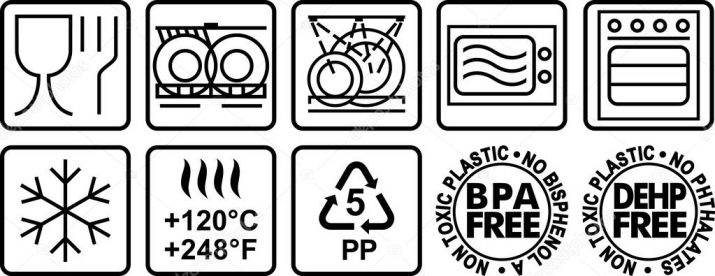
The main functions of marking:
- convey the full and most reliable information about the product to the average user;
- Encourage a potential buyer to purchase this product after reviewing the quality characteristics.
Depending on the nature of the icons and various symbols, the marking can be verbal and graphic, as well as spatial and mixed. The main elements of the marking are text, drawings, information icons.
There are certain requirements for product labeling:
- information should be simplified and understandable, as well as reliable.
- the manufacturer must provide the buyer with complete information about the product, explaining specific terms;
- on the product you can not post extra information;
- labeling should not have a double meaning;
- the font size of labels or badges must be legible and meet certain standards.
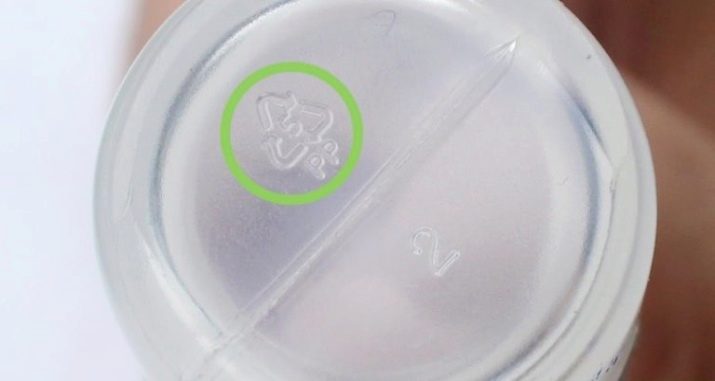
Requirements for plastic utensils
Consumer characteristics of plastic utensils affect its final choice and are considered the most essential for its operation.
- This kind of cookware should be safe to use. It is imperative that it fully complies with all established hygiene and medical standards.
- The aesthetic side of the issue is also considered important - the dishes should be outwardly attractive. Today, plastic sets are distinguished by a large selection of colors, the presence of stylish patterns.
- Properties of heat resistance - the product must retain all its qualities when in contact with food and drinks in a hot state.
- Use for various dishes, the possibility of storing food in the refrigerator or freezer, as well as for use in the microwave.
- Increased resistance to alkali, acids or fats.
- The presence of thermostability is the ability of the consumer to hold a heated plate or glass in his hands and not get burned at the same time.
- Elasticity. For plastic knives and forks - the ability to easily chop and chop food without breaking the appliances themselves.
- Resistance to a number of impacts.
- The ability to select different forms and parameters.
- Good capacity, compactness and lightness.
- Eco-friendly and simplified disposal.
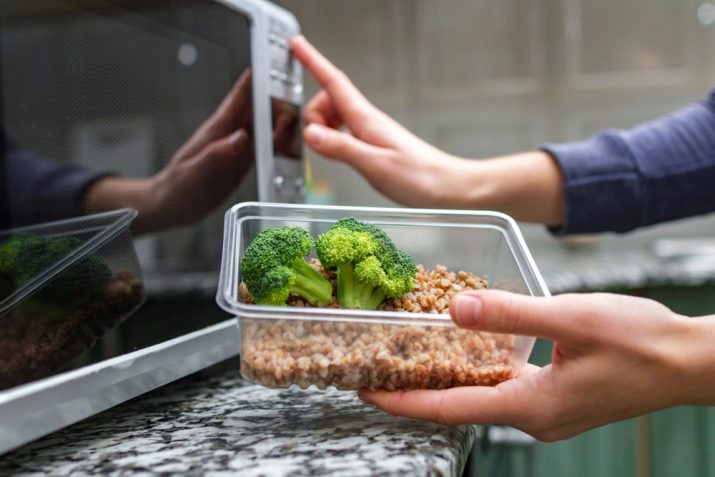
Professionals advise kitchen items made from such an unsafe material as plastic not to be used more than 1 time - this warning applies to all plastic utensils. Plastic containers become extremely dangerous for the body during secondary use.
It is better not to purchase plastic cups at all, since they can not be recycled at all. Moreover, the material contains a large number of toxic components, which when drinking hot drinks, of course, end up in the body and cause irreparable harm to it.
Always look at the labeling of plastic products proposed by companies - these detailed designations on disposable utensils will practically tell everyone about its operational properties. For the average consumer, all types of disposable tableware are the same, but in fact, not every type of plastic is suitable for active use for domestic purposes, not every one of them will be able to tolerate heating or temperature changes.

Types of plastic
Ware from beautiful and durable plastic these days has a very wide domestic use, which is justified by low cost and maximum comfort in use. Most modern cafeterias offer just this kind of inexpensive dishes. Lunches, picnic sets or full-fledged office lunches also involve the use of food-grade plastic. And different drinks are generally almost all bottled at once.
What designations should be looked at when buying, and what type of plastic this or that sign speaks of - we will consider below.
- PS - polystyrene. Intended for cool drinks. Hot tea or coffee, as well as alcoholic products from these glasses are not recommended. Polystyrene, which is in the material, can accumulate inside the body and as a result can seriously affect the state of the liver.
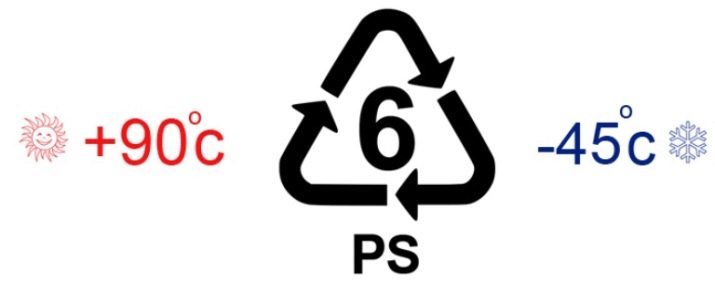
- PP is polypropylene. Of these products, you can safely drink even very hot coffee and tea, since the material is not afraid of heating to 100 C. However, doctors do not advise you to seriously get involved in the use of this type of utensil - it emits toxic phenol, and it will seriously hit the kidneys and can even lead to complete loss of vision. Of this plastic, toys for children are often made.
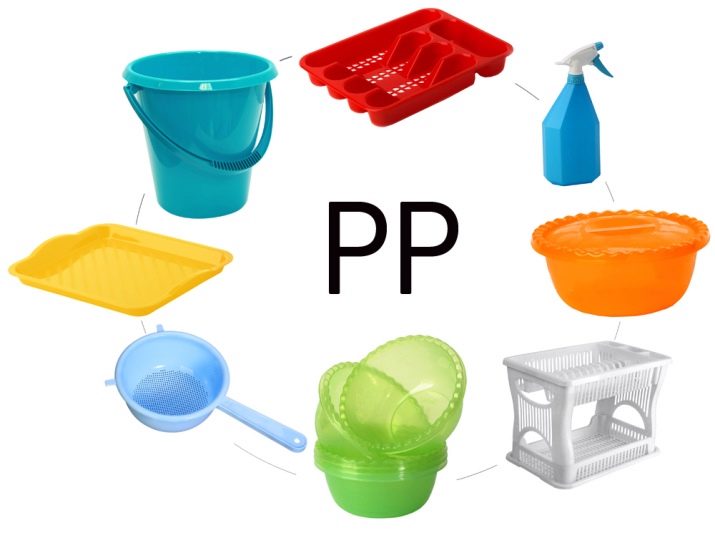
- PET or PETE - polyethylene terephthalate. It is allowed to use products from this plastic in order to pack juices, mineral water, and other popular drinks.However, its use remains highly undesirable, as it can also cause significant health problems.

- PEHD or HDPE - high density polyethylene. The most convenient during operation and conditionally it can be called safe. Flasks, bottles, and sometimes packaging for the long-term preservation of dairy products are produced from this material. But even under certain conditions it begins to emit an extremely dangerous component - formaldehyde.

- PVC or PVC - polyvinyl chloride. It is forbidden as food packaging, as it can emit a lot of very harmful chemical components. Most often, it is used to make containers for storing detergents and other non-food products.

- LDPE and PEBD - low density polyethylene. It is produced for packaging non-food products, although it is called by experts almost safe.

- OTHER or O - other. These signs will tell the average person that this plastic cannot be classified under any of the above types. Usually refers to one of the safest species (conditionally) for humans.

Disposable devices made of non-toxic plastic are most often indicated by the numbers 05 or 1.
When choosing containers made of plastic, it is worthwhile to familiarize yourself with the decoding of the markers. Any plastic product must have a special badge that tells which material this product is made of. If there are no badges on the product at all, then in no case should you buy it. For example, if there are numbers in the triangle icon at the bottom of the dishes or there are PVC letters, this is a signal for you that this kind of packaging is extremely toxic.
Any plastic container popular today must have its own special designation. It all depends on the type of labeling, thanks to which it is possible to distinguish material that is not very dangerous and extremely toxic to human health.

On a disposable tableware there will always be a sign in the form of a small triangle, which consists of 3 arrows. Inside this triangle, numbers from 1 to 7 are indicated. Consider what each of the numbers means.
- Digit 1 (PET) will tell the buyer that this container should only be used once. Such marking is commonly found on disposable containers (bottles) made of plastic. Using them a second time is strictly prohibited.
- Number 2 (LDPE) - since this polyethylene has a high density, it is often used a second time, although its degree of safety is considered conditional.
- Digit 3 (PVC) - selected to release packaging from the film. Extremely toxic material that can burn toxic components during combustion.
- Digit 4 (HDPE) - Suitable for the production of various bags made of polyethylene. It can be safely used a second time, since it almost does not interact with food.
- Digit 5 (PP) - polypropylene. Great for repeated use; available for the manufacture of food containers.
- Number 6 (PS) - This is a foam, which manufacturers use as an additive in the mixture for the production of caps for disposable cups.
- Number 7 or others - completely unsuitable for the food industry, as they can cause severe illnesses.

Icons for cooking methods
Marking utensils suitable for safe heating in the microwave is always placed on the product itself and usually looks like a several times smaller picture of the appliance itself with a plate that is placed inside it.
If on the product you saw the number 6, enclosed in a triangle sign of 3 arrows, and the letters PS below, then this means that you have polystyrene dishes in front of you. In no case should such a product be used for hot dishes, it is forbidden to put on warming up in the microwave. The whole problem is that if you nevertheless warm the food a little in this form of plastic, you can seriously poison yourself, since polystyrene will release extremely dangerous toxins during even minimal heating.
A safe option is a special plastic dish for a microwave oven. Before purchasing a container, you should pay attention to the presence of a special stigma, which is usually located on the bottom or lid of the container. A special dish made of plastic for a microwave oven is indicated by a combination of letters - PP and PC, and in addition, the tank must have a thematic sign in the form of small waves or a microwave oven pattern.

You should also know that containers that are purchased specifically for the microwave oven should not become too hot or too hot, especially if they have just been removed from the refrigerator. An exception can only be special plastic containers in which you can warm dishes as soon as they are taken out of the refrigerator.
Signs that indicate the nuances of operation
Sometimes on disposable tableware you can see a number of rather interesting icons, the meaning of which is not always clear.
Glass Fork Sign
This icon is often found on various types of products and it literally means the following:
- this kind of product is released from non-toxic material;
- can be used to store different types of food;
- All of these materials are completely safe.
This icon can be seen even on certain types of household appliances.
The symbol “Glass-plug” is most often placed precisely on plastic to reflect for the buyer information about the suitability of the purchased product for direct and safe contact with various products used in the forest. But if this icon is underlined, then the products should not come in contact with food.

Green dot sign
This kind of noticeable badge can be put on own products only by those brands that finance the German program for environmentally friendly recycling of plastic waste - “Eco Emballage” and are included in its system of complete disposal.
Many companies that manufacture plastic products are not included in this system, but nevertheless they put this icon on their products, which can be considered a clear attempt to mislead customers about the environmental component of goods.

Sign "Recycled material"
A product released for the second time from recycled materials or still suitable for ongoing processing. The triangle icon on the package, consisting of 3 arrows, means that this type of dishes is released from the secondary.
Inside the triangle itself, well-readable numbers will most often be found. They will talk about a specific type of processing. So, if you see a number, then it will mean:
- from 1 to 19 - plastic;
- from 20 to 39 - paper or cardboard;
- from 40 to 49 - metal;
- from 50 to 59 - wood;
- from 60 to 69 - fabric or textile;
- from 70 to 79 - glass.


True, it is also worth knowing that the use of this sign is not under control, so anyone who wants to can put it on their products, and therefore, sometimes in practice this sign may have absolutely no meaning.
Designation of other signs found on plastic dishes
- microwave crossed out - such dishes cannot be heated in it;
- two alternately rotating arrows - this product cannot be used a second time;
- plate and spoon crossed out - not suitable for hot food;
- crossed out refrigerator - do not refrigerate;
- crossed dish with chicken - Do not pour fat;
- thermometer image - can withstand temperature changes.

In any case, even using almost safe types of plastic utensils, think about whether to switch to more traditional materials in daily use, a thousand-year history of which confirms their benefits for human health.
For more details on what marking on plastic utensils means, see the next video.









